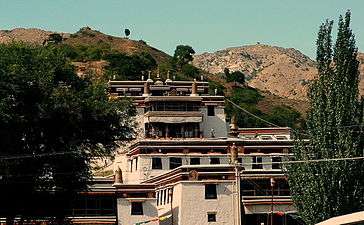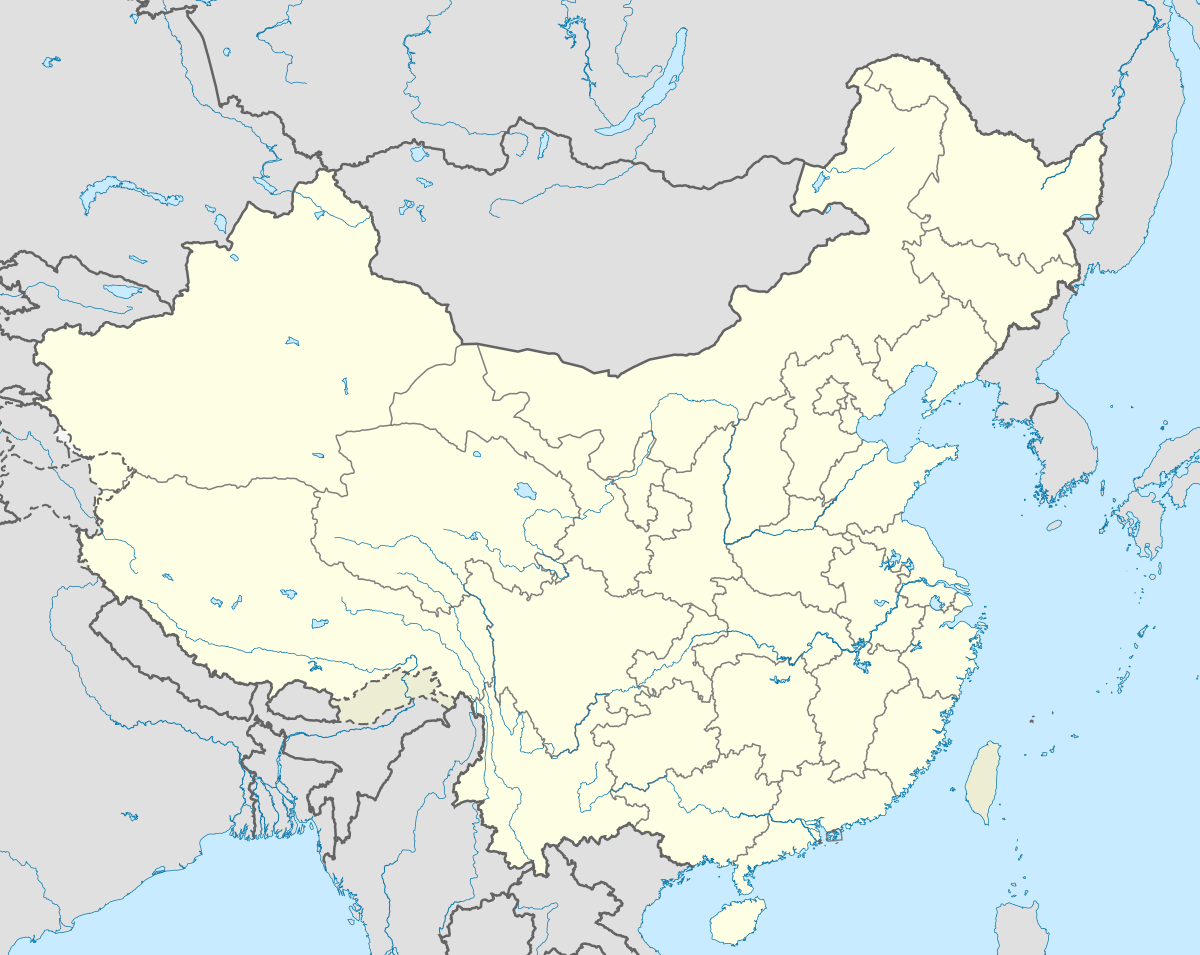Badekar Monastery
Badekar Monastery (Mongolian script: ᠪᠠᠳ᠋ᠠᠺᠠᠷ ᠵᠤᠤ; Mongolian Cyrillic: Бадекар Зуу), alternatively known as Wudang Temple, is a Tibetan Buddhist monastery of the Gelug sect. It is the largest Tibetan Buddhist monastery in Inner Mongolia,[1] and was designated a Major Historical and Cultural Site Protected at the National Level in 1996.[2]
| Badekar Monastery | |
|---|---|
 Badekar Monastery | |
| Religion | |
| Affiliation | Tibetan Buddhism |
| Sect | Gelug |
| Location | |
| Location | Bugat |
| Country | China |
 Location within China | |
| Geographic coordinates | 40.792319°N 110.314595°E |
| Architecture | |
| Style | Tibetan |
| Founder | Prince of Ordos Fore-Banner of the Left Wing |
| Date established | Qing dynasty Renovated 1749 |
| Part of a series on |
| Tibetan Buddhism |
|---|
 |
|
|
|
Practices and attainment |
|
Institutional roles |
|
History and overview |
Names
Badekar Monastery has three names. One is Mongolian, which is Wudang Temple (Chinese: 五當召; pinyin: Wǔ dāng zhào); Wudang is a Chinese transliteration of the Mongolian word for willow, whilst zhao is a transliteration of the word for temple.[1] Badekar is the Tibetan name and means white peony. The Chinese name is Guangjue Temple (Chinese: 廣覺寺; pinyin: Guǎngjué sì), which was granted in 1756 by the Qianlong emperor.[1]
History
The Qing government was a major patron of Tibetan Buddhism in Hohhot and Inner Mongolia more broadly. The association between the government and religion assisted the Qing in maintaining their power in Inner Mongolia.[3] Badekar Monastery was built sometime after the Kangxi era as part of the rapid construction of Tibetan Buddhist structures.[3] The monastery was expanded on a massive scale under the Qianlong emperor, reportedly to pacify the local Mongolian population after the Qing massacred a rebellious group from the Dzungar Basin. The complex also received generous grants and expansion under the Jiaqing emperor and Daoguang emperor.[3]
The monastery is located 54 km from Bugat, but was developed as a major tourist destination during the reforms of the 1980s.[2] In 2001, the area around the monastery was declared a national park.
Architecture
In contrast to other Tibetan Buddhist institutions in Inner Mongolia, Badekar Monastery was constructed according to the layout of Tashi Lhunpo Monastery in Xigazê, thus it incorporates no Han-style architecture. All structures are positioned horizontally along the mountain, with halls along the central access ascending up into the mountains.[4]
Environment
From the late 1990s, it was observed that much of the vegetation near the monastery was receding, streams were drying up, and desert was spreading. The problem has been exacerbated by heavy summer rains, which inundate the dry soil, washing it away.[5] The area in front of the monastery has been urbanised and, in 2009, it was noted that very few willow trees could be found in its vicinity, despite them once having been plentiful.[5]
References
Notes
- Yao & Di (1988), p. 120.
- Liu & Ye (2009), p. 1.
- Yao & Di (1988), p. 121.
- Yao & Di (1988), p. 122.
- Liu & Ye (2009), p. 3.
Works cited
- Liu 刘, Lin'an 临; Ye 叶, Yangyang 阳阳 (2009). "文物保护原则与旅游发展促进相结合的整合性规划——以内蒙古包头市五当召为例" [Integrated Planning Combined with Conservative Principles and Tourist Promotion——Taking Wudang Monastery as an Example]. Journal of Beijing University of civil Engineering and Architecture (in Chinese) (4).
- Yao 姚, Guixuan 桂轩; Di 翟, Wen 文 (1988). "五当召及其在内蒙古历史上的地位" [Wudang Temple and its position in Inner Mongolia's history]. Yinshan Academic Journal (in Chinese) (1).